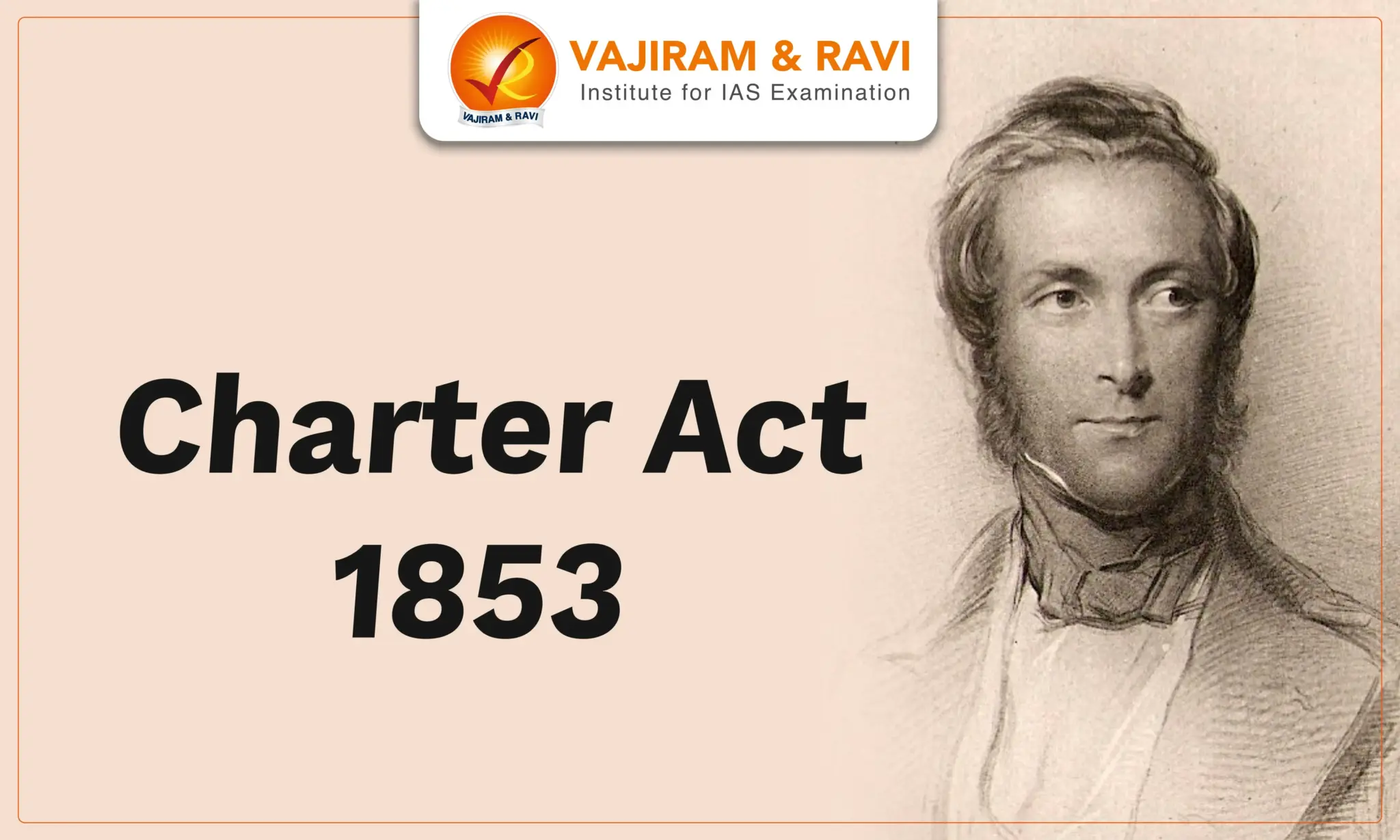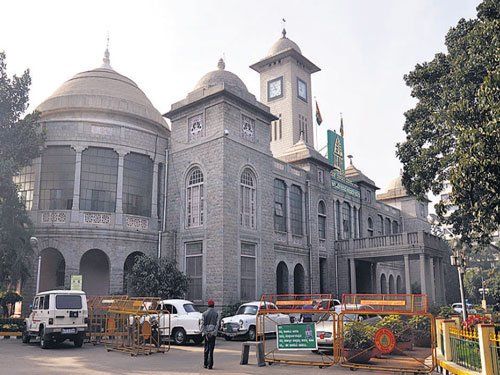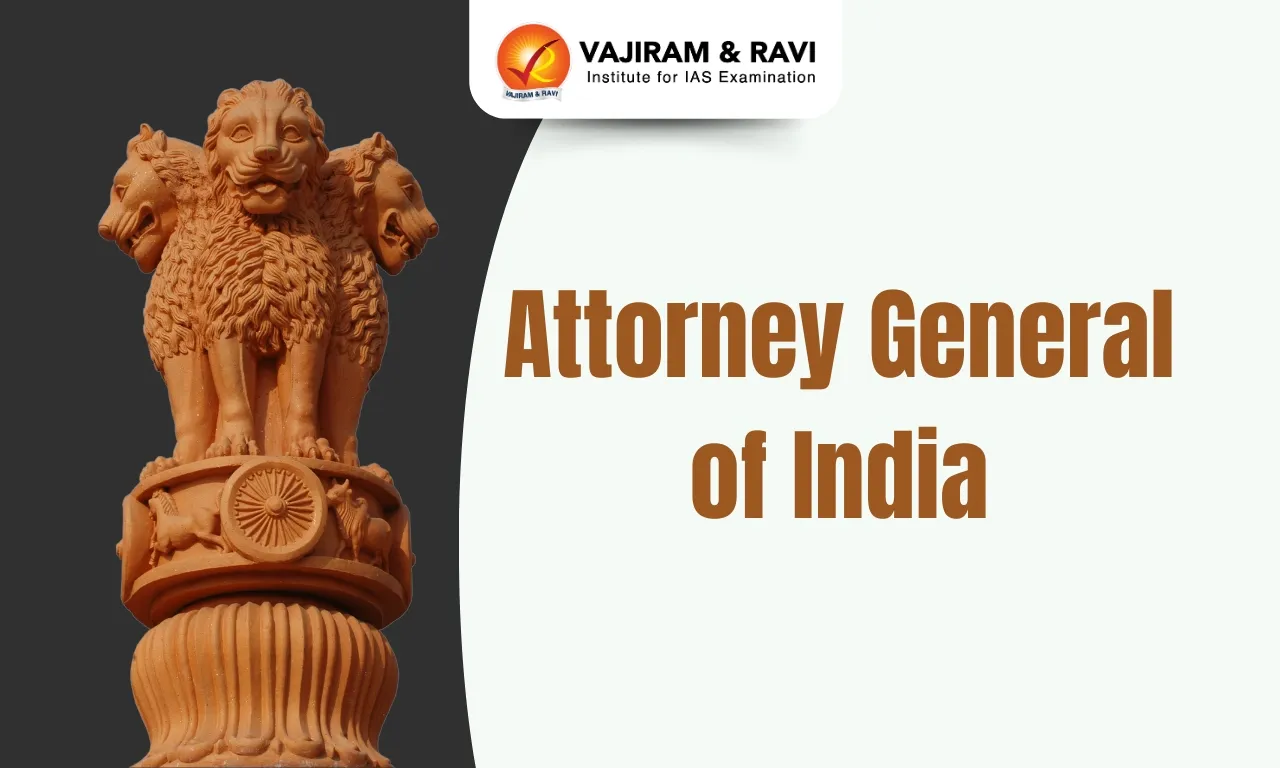The Charter Act of 1853 was a significant legislative act passed by the British Parliament. It was the final Charter Act in the series that governed the affairs of the East India Company. This act played a pivotal role in shaping British India's governance, introducing several administrative reforms that laid the groundwork for the future structure.
The Charter Act of 1853 is notable for its influence on the Indian legislative system and the gradual shift towards a more structured bureaucracy.
Charter Act 1853 Background
The Charter Act of 1853 was the result of increasing concerns in Britain about the effectiveness and accountability of the East India Company's administration in India. Additionally, there was growing criticism of the East India Company's rule in India and calls for reform.
- High Costs and Business Delays: The involvement of the Board of Directors and the Court of Directors led to significant financial burdens and delays in administrative processes.
- Territorial Changes: Following the passage of the Charter Act 1833, the British East India Company annexed regions like Sind, Punjab, and other Indian states.
- These territorial expansions and political shifts underscored the need for reforms to address evolving governance challenges.
- Governor-General's Dual Role: There were concerns that the Governor-General of India, also serving as the Governor of Bengal, might make biased decisions favouring Bengal and compromising fair governance across British India.
- Calls for Decentralisation and Indian Involvement: There was an increasing demand for decentralising power and allowing Indian participation in governance. In light of these circumstances, the British Parliament renewed the East India Company's charter in 1853.
Charter Act 1853 Provisions
The Charter Act of 1853 was the last of several Charter Acts passed by the British Parliament between 1793 and 1853. It was a crucial constitutional landmark and was introduced during the tenure of Lord Dalhousie. The Charter Act of 1853 had the following provisions:
- Indefinite Renewal of the East India Company's Charter: The Charter Act 1853 extended the Company's rule and allowed it to keep possession of Indian territories in trust for the British Crown. In contrast to previous Charters, it did not specify a specific period. This indicated that Parliament could terminate the Company's rule at any time.
- Separation of powers: The Charter Act of 1853 formally separated the legislative and executive functions of the Governor-General's Council. This separation was a crucial step towards the development of a more systematic and formal legislative process in British India.
- Establishment of Indian Legislative Council: The Charter Act 1853 called for the addition of six new council members known as legislative councillors.
- In other words, it created a separate Governor-General's legislative council, which became known as the Indian (Central) Legislative Council.
- The law member became a full member of the governor general’s executive council.
- Expansion of Legislative Council: This legislative wing of the council operated as a mini-parliament, following the same procedures as the British Parliament. Thus, for the first time, legislation was treated as a special function of the government, necessitating special machinery and procedures.
- Members of the Legislative Council included the Governor-General, Commander-in-Chief, four members of the Governor-General's Council, Chief Justice and a regular judge of Calcutta Supreme, Court 4 representatives from provincial governments.
- Introduction of Civil Service: The Charter Act of 1853 introduced an open competition system for selecting and recruiting civil servants.
- The covenant civil service was thus extended to the Indians as well.
- In 1854, the Macaulay Committee (also known as the Committee on the Indian Civil Service) was formed.
- Introduction of Local Representation: The Charter of 1853 introduced local representation in the Indian (Central) Legislative Council for the first time.
- Four of the six new legislative members of the Governor-General’s Council were appointed by the local governments of Madras, Bombay, Bengal, and Agra.
- Reduced Strength of Court of Directors: The Charter Act 1853 reduced the number of Directors of the East India Company from 24 to 18, with 6 to be nominated by the Crown.
- Establishment of Different Presidencies: The concept of establishing different presidencies originated with the Charter Act of 1853. The Act empowered the Court of Directors to appoint a Lieutenant Governor (LG) for the state of Punjab. So, in 1859, a new presidency was established.
- Salary of Members: The Charter Act of 1853 made the Company responsible for paying the salaries of its Board of Control members, secretaries, and other officers.
- Governor-General's Authority: The Charter Act of 1853 granted the governor-general the authority to nominate a vice president for the council. The Governor-General's assent was required for all legislative proposals.
- Separate Governor for Bengal: The Charter Act of 1853 established a separate governor for the Bengal Presidency. This distinguished the governor of Bengal from the Governor-General, who was in charge of India's administration as a whole.
Charter Act 1853 Significance
The Charter Act of 1853 was a landmark in the constitutional history of British India, underscoring the limited longevity of the East India Company’s rule in India. Its significance includes:
- Foundation of Modern Parliamentary System: The act established a separate legislative body, which laid the foundation for British India's legislative development. This was the beginning of a formal legislative process in India, which would later evolve into the modern parliamentary system.
- Merit-Based Civil Service: The act introduced open competition for civil service recruitment, resulting in a more professional and efficient administrative system.
- Greater British Control: The act established greater British control over Indian governance. By not establishing a fixed term for the East India Company's rule, the act effectively subjected the company's administration to direct British Parliament oversight.
- Transfer of Authority: The Bengal government relinquished its supervisory role over the Governor-General, enabling him to operate directly on behalf of the British government. This transfer of authority was a significant change brought about by the Act.
Charter Act 1853 Criticism
The Charter Act of 1853, though progressive in some aspects, faced substantial criticism for its exclusion of Indian representation and the limitations it imposed on the legislative council's powers.
- Lack of Indian Representation: The Charter Act of 1853 was criticized for not including Indian representation in the Legislative Council, leaving local voices out of governance. Further, Indians were not accepted as executive members.
- Limited Legislative Powers: Despite separating legislative and executive functions, the Governor-General retained most control, restricting the council's legislative powers.
- Barriers to Indian Civil Service Entry: While the Act opened civil service examinations to Indians in theory, requiring candidates to travel to Britain for the exams created a major practical barrier for most Indians.
- Potential for British Crown Intervention: The Act did not renew the East India Company's rule for another 20 years, allowing the British Crown to potentially take control, especially after the Indian Rebellion of 1857.
Last updated on December, 2025
→ Check out the latest UPSC Syllabus 2026 here.
→ Join Vajiram & Ravi’s Interview Guidance Programme for expert help to crack your final UPSC stage.
→ UPSC Mains Result 2025 is now out.
→ UPSC Notification 2026 is scheduled to be released on January 14, 2026.
→ UPSC Calendar 2026 is released on 15th May, 2025.
→ The UPSC Vacancy 2025 were released 1129, out of which 979 were for UPSC CSE and remaining 150 are for UPSC IFoS.
→ UPSC Prelims 2026 will be conducted on 24th May, 2026 & UPSC Mains 2026 will be conducted on 21st August 2026.
→ The UPSC Selection Process is of 3 stages-Prelims, Mains and Interview.
→ UPSC Result 2024 is released with latest UPSC Marksheet 2024. Check Now!
→ UPSC Prelims Result 2025 is out now for the CSE held on 25 May 2025.
→ UPSC Toppers List 2024 is released now. Shakti Dubey is UPSC AIR 1 2024 Topper.
→ UPSC Prelims Question Paper 2025 and Unofficial Prelims Answer Key 2025 are available now.
→ UPSC Mains Question Paper 2025 is out for Essay, GS 1, 2, 3 & GS 4.
→ UPSC Mains Indian Language Question Paper 2025 is now out.
→ UPSC Mains Optional Question Paper 2025 is now out.
→ Also check Best IAS Coaching in Delhi
Charter Act 1853 FAQs
Q1. What was the Charter Act of 1853?+
Q2. What are the defects of the Charter Act of 1853?+
Q3. What was the main purpose of the Charter Act 1853?+
Q4. What do you mean by charter act?+
Q5. Who introduced the First Charter Act?+
Tags: charter act 1853 quest

















